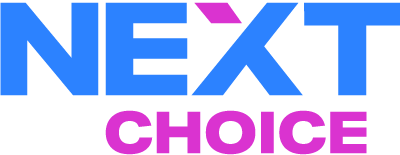What Steps Can You Take to Implement Competitive Edge Technology in Your Organization?
In today's fast-paced business environment, staying ahead of the competition is crucial. Implementing competitive edge technology can give your organization the boost it needs to thrive. But where do you start? This FAQ will walk you through the essential steps to effectively integrate these technologies into your operations.
Step 1: Assess Your Current Technology Landscape
Understanding what technology you currently have in place is crucial. This involves analyzing your existing systems and identifying any gaps that competitive edge technology can fill.
To kick off this assessment, consider conducting an audit of your current technological infrastructure. Are there outdated systems draining resources? What tools are your teams frequently using? This benchmarking is essential to carve out a path for effective upgrades.
Once you've established a clear picture, engage with team members to gather insights about their experiences. They can provide valuable information on software and systems that enhance productivity versus those that create frustration.
An honest evaluation of your existing capabilities not only reveals areas for improvement but also highlights strengths you can build upon. Leveraging what you're already good at can create a smoother transition to new technologies.
Step 2: Identify Your Goals
What do you hope to achieve by implementing new technology? Setting clear objectives will guide your technology selection process and ensure alignment with your business strategy.
Consider crafting both short-term and long-term goals. For instance, while a short-term goal might be to reduce operational costs within six months, a longer-term goal could include enhancing customer experience over several years.
Furthermore, goals should be measurable. This allows your organization not only to define success but to also iterate on strategies and improve upon the existing framework as you gather insights from what works and what doesn't.
Involving various departments in this goal-setting process ensures that everyone's needs are considered. Collaboration at this stage fosters a sense of ownership, making the subsequent implementation smoother and more cohesive.
Step 3: Research Available Technologies
Explore the latest technologies that can give you a competitive advantage. Consider factors such as cost, scalability, and ease of integration into existing systems.
Start by identifying the top solutions in your industry. Are there software tools or platforms that have garnered positive feedback from other organizations? Researching industry-specific case studies can provide insights into what might work best for you.
Don't hesitate to delve deep into user reviews and comparisons. Websites dedicated to technology reviews can deliver firsthand accounts of performance, which can be invaluable for your decision-making process.
Engaging with vendors through demonstrations can also offer a glimpse of how these technologies function in real-time. This could sway your decision during the evaluation phase, as seeing machinery and software in action can significantly clarify their potential impact.
Step 4: Create an Implementation Plan
Develop a detailed plan that outlines how you will roll out the new technology. This should include timelines, budget considerations, and staffing requirements.
Ensure your plan has clear milestones — these act as checkpoints that can help your team stay on track. Setting deadlines can transform a daunting project into manageable phases, making it less overwhelming.
Budgeting is another critical component of your implementation plan. Take into account both the upfront costs and ongoing expenses associated with maintenance and training, so you have a comprehensive view of the financial commitment required.
Don't forget to assign team roles clearly. By delegating tasks and responsibilities, you create accountability among team members, which can bolster motivation and enthusiasm for the transition.
Step 5: Train Your Team
Successful technology implementation requires a team that is well-trained and comfortable using the new tools. Invest time in training programs to facilitate a smooth transition.
Use diverse training methods to cater to different learning styles. From hands-on workshops to online tutorials, offering varied formats ensures that all team members can engage effectively and learn at their own pace.
In addition to training sessions, create user guides or reference materials that can be easily accessed later. This can help alleviate anxiety for those who may not be as tech-savvy or who prefer self-paced learning.
Encouraging an open feedback loop during this phase is equally crucial. Foster an environment where team members feel they can ask questions or express concerns, as it can prevent frustrations down the road.
Step 6: Monitor Progress and Adapt
Finally, continuously monitor the performance of your new technology. Gather feedback from users and be prepared to make adjustments as needed to maximize effectiveness.
Set up regular check-ins to discuss how the new technology is impacting workflows. These discussions can shed light on any unforeseen challenges and allow for timely adjustments before minor issues escalate.
Tools that provide analytics can be your best friend here. From tracking user engagement to measuring productivity, quantify success metrics to give your leadership team comprehensive insights into the technology's impact.
Last but not least, remain flexible. The business landscape is ever-evolving, and being open to continual learning and adaptation ensures you maintain your competitive edge for years to come.
Summing It Up
By following these steps, your organization can successfully implement competitive edge technology, leading to increased efficiency, innovation, and market advantage. Remember, it's not just about adopting the latest technology but ensuring it aligns with your organization's goals and enhances your overall strategy.

